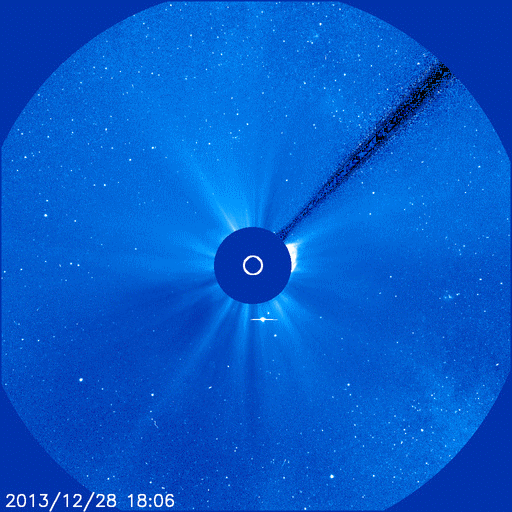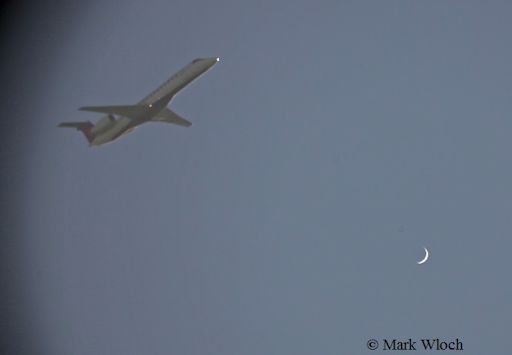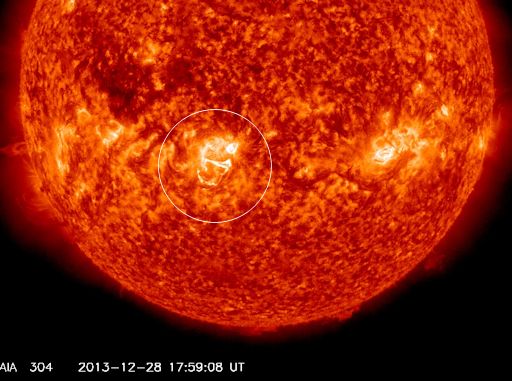What's in the sky tonight?
December 29, 2013
-Energetic protons are swarming around Earth on Dec. 29th following a magnetic eruption near the western limb of the sun. The ongoing radiation storm ranks S1 on NOAA storm scales, which means it is a relatively minor storm with little effect on spacecraft and high-altitude aviation.
-Now is a great time to look at the second planet from the sun. Like the Moon, Venus has phases, and at the moment it is a 6% crescent. Moreover, it is bright enough to see in broad daylight. Yesterday, Mark Wloch pointed his Celestron C8 telescope at the blue sky over Southgate, Michigan, and this is what he saw.
"I captured Venus during daylight with a jet passing by," says Wloch. "What a beautiful conjunction."
Yes, it is easy to see Venus in broad daylight, but it is even easier to see the planet at sunset when Venus pierces the darkening sky like a beacon 150 times brighter than a 1st-magnitude star. Indeed, some sky watchers think Venus is an airplane. A quick look through a pair of binoculars, however, reveals the crescent. Point your optics southwest after sunset. No sky map is required; you can't miss Venus.
-AR1936 is waking up. The sunspot has a 'beta-gamma-delta' magnetic field that harbors energy for strong eruptions, yet it has been quiet for days. Now AR1936 is beginning to crackle with flares. NASA's Solar Dynamics Observatory recorded the extreme ultraviolet flash from an almost-M-class flare at 1800 UT on Dec. 28th. Because the sunspot is facing Earth, any flares emanating from it are going to be geoeffective. So far, the extreme ultraviolet "crackles" have produced only minor waves of ionization in our planet's upper atmosphere. Earth-effects will increase, however, if the activity continues to intensify. Stay tuned!



 Astro Picture of the Day:
December 29, 2013
Source:
Astro Picture of the Day:
December 29, 2013
Source:
Sometimes, after your eyes adapt to the dark, a spectacular sky appears. Such was the case in 2011 March when one of the largest auroral displays in recent years appeared over northern locations like the border between Norway and Russia. Pictured in the above time-lapse movie, auroras flow over snow covered landscapes, trees, clouds, mountains and lakes found near Kirkenes, Norway. Many times the auroras are green, as high energy particles strike the Earth's atmosphere, causing the air to glow as electrons resettle into their oxygen hosts. Other colors are occasionally noticeable as atmospheric nitrogen also becomes affected. In later sequences the Moon and rising stars are also visible. With the Sun currently hovering near its time of maximum activity, there may be many opportunities to see similarly spectacular auroras personally, even from areas much closer to the equator.